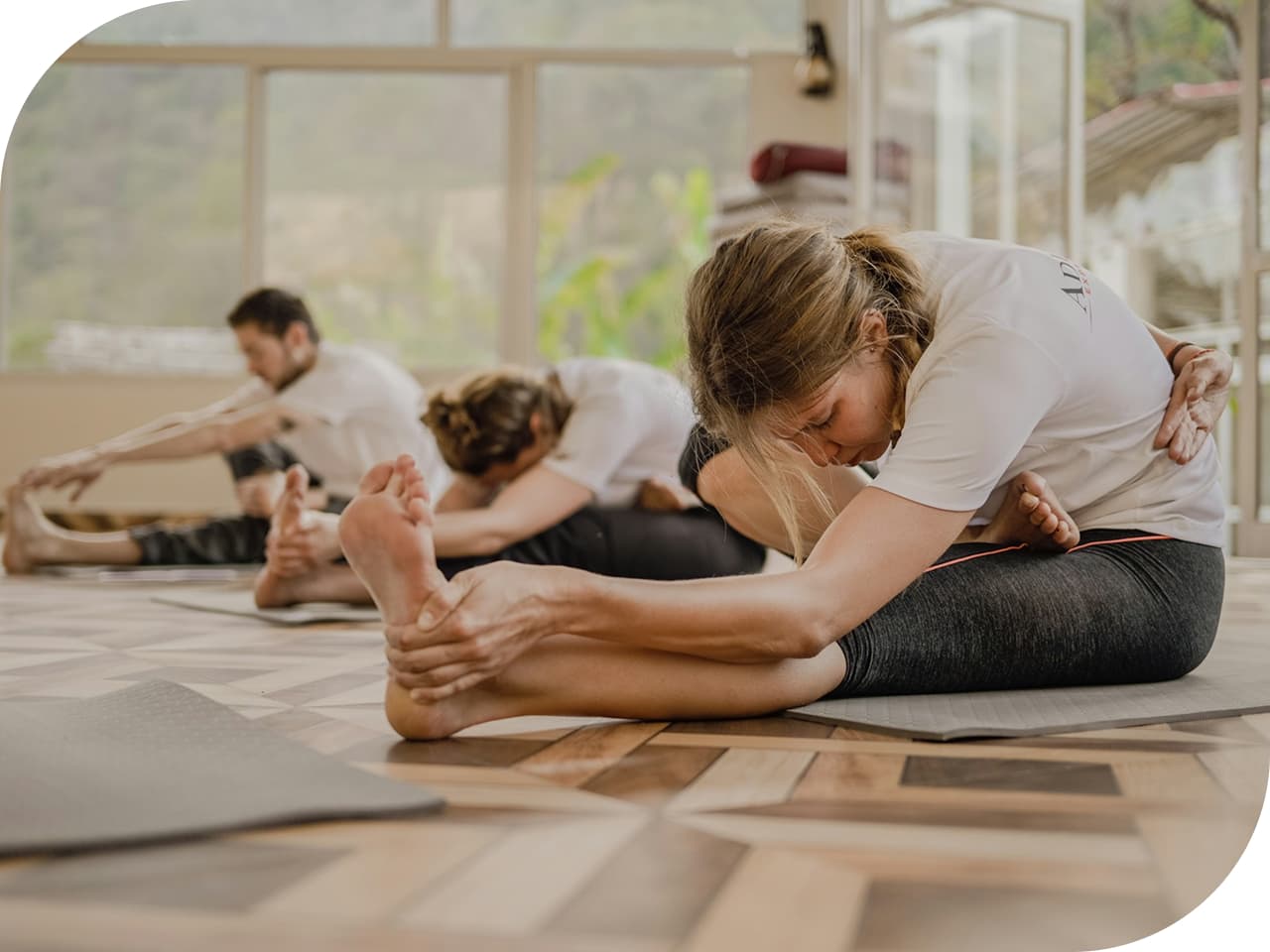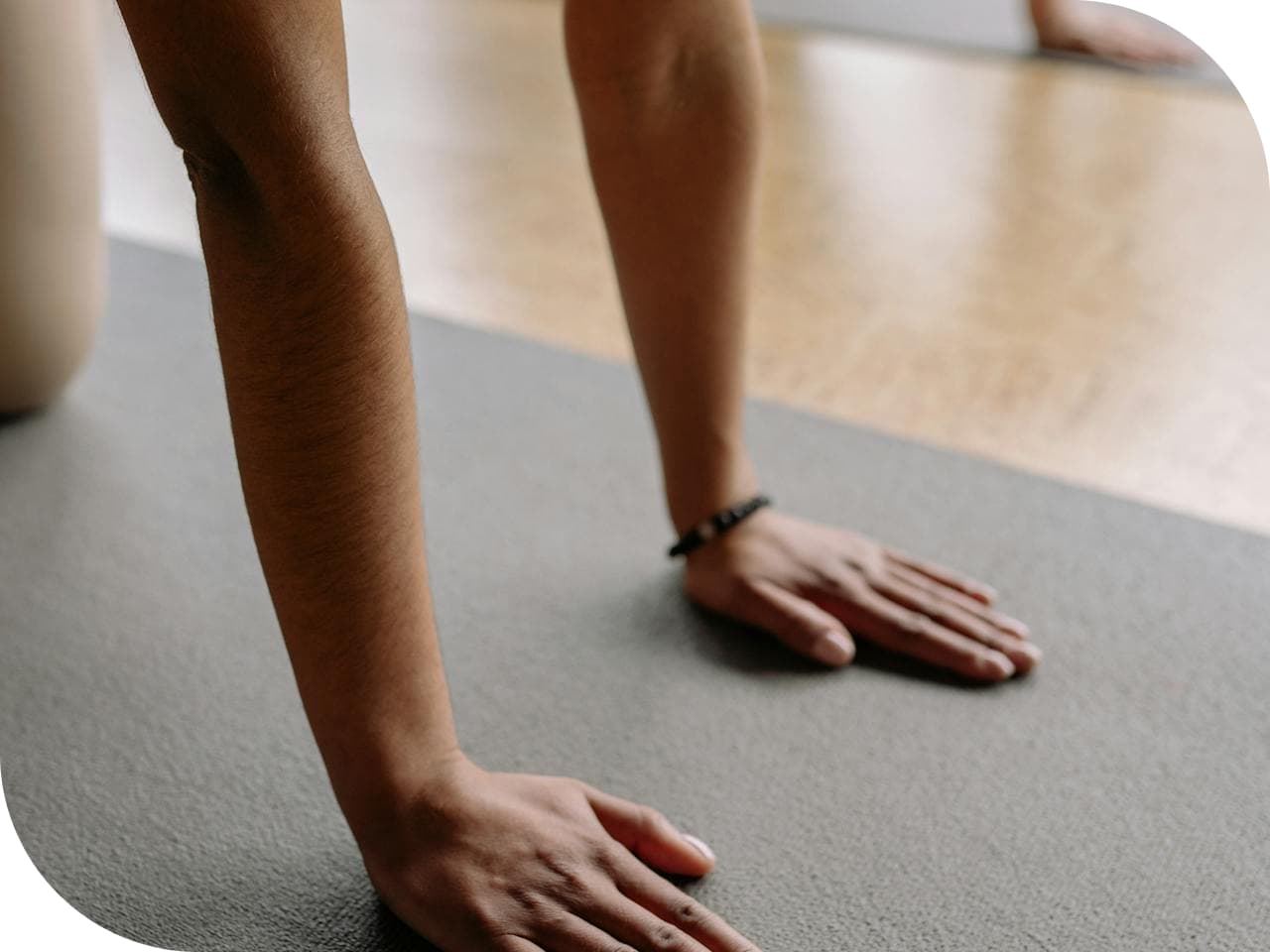Yoga Instructors Insurance
Professional liability insurance covers your yoga instructor business if you’re sued for performing professional services, even if you haven’t done anything wrong. Get a quote and buy yoga insurance online in under five minutes.
4.6 rating


APOLLO and Gallagher Partner to Protect Your Business
We've partnered with Gallagher, one of Canada's leading insurance brokers, to provide insurance designed for businesses and business professionals. Get professional liability, general liability, and/or contents insurance designed specifically for your profession.
Get insurance in three easy steps


Choose the payment plan that suits you best.

Get your policy documents in an email instantly.
3 Kinds of Coverage Included in Our Yoga Instructor Insurance

Professional Liability Insurance
Protects you if a client claims your instruction caused them harm. Covers legal costs, expert testimony, and any damages awarded, even beyond your policy limits.

General Liability Insurance
Covers you if someone is injured or their property is damaged during one of your sessions, whether it’s in a studio, a client’s home, or a public park.

Contents Insurance
Helps protect and replace your yoga equipment like mats, blocks, speakers, or bolsters if it's stolen, lost, or damaged.
Yoga Instructors Offer a Valuable Service to Their Clients

You’re not just teaching yoga. You’re creating space for breath, movement, and healing.
Whether you guide students through their first downward dog or help long-time practitioners deepen their practice, you carry real responsibility. And while your sessions may feel peaceful, accidents can still happen, such as a slip on a mat, an injury from an adjustment, or even damage to your portable speaker during a beach class.
That’s where yoga instructor insurance comes in.
It protects you from the unexpected, so you can focus on what matters: helping others reconnect with their bodies and minds. From studios to living rooms, from Zoom classes to park sessions, your insurance moves with you, just like your practice.

You’re a wellness professional and a business owner.
Yoga may be your passion, but it’s also your livelihood. Like any small business, it deserves protection. Liability insurance isn’t just a formality, it’s a safeguard for your career, your reputation, and your peace of mind.
Studios often require proof of coverage. Clients trust your training. And legally, you're expected to uphold a duty of care that matches your expertise. With APOLLO, you get the coverage you need without the paperwork or hassle.
Get covered in minutes and teach with confidence.
FAQs About Yoga Instructors Insurance
Is yoga instructor insurance mandatory in Canada?
While not legally required across all provinces, many studios and clients will ask for proof of insurance before you can teach. It’s also a smart way to protect yourself from unexpected legal or financial issues.
What type of insurance do I need as a yoga instructor?
At minimum, you’ll want professional liability and general liability coverage. You can also add contents coverage for your yoga gear, like mats, bolsters, or speakers.
I teach yoga in parks and outdoor spaces. Am I covered?
Yes! Our policy follows you wherever you teach, whether it’s a community centre, a client’s home, or a class in the park.
Am I protected if someone gets hurt during an online class?
Yes. Even if you’re leading a virtual session, you can be held responsible if someone gets injured following your instruction. Our coverage includes remote teaching.
The studio I teach at has insurance. Do I still need my own?
Most likely, yes. Studio insurance usually covers the facility, not the individual instructors. Having your own policy protects you directly if a claim is made.
Can I write off my insurance costs as a business expense?
In most cases, yes — especially if you’re self-employed. We recommend speaking with a tax professional for advice specific to your situation.
Can I get proof of insurance today?
Absolutely. APOLLO delivers instant proof of insurance once you complete your purchase. No delays, no phone calls.
Do I need different coverage if I teach in multiple locations?
No, our coverage is designed to move with you. Whether you're teaching at studios, gyms, homes, or online, you’re protected.
Why do yoga instructors need insurance?
Because you’re responsible for your clients’ physical wellbeing. If something goes wron, even unintentionally, you could face a lawsuit. Insurance protects your finances, reputation, and career.
How Much Does Yoga Instructor Insurance Cost in Canada?
Short answer? Probably less than your monthly studio rent, and way less than the cost of a single lawsuit.
Most yoga instructors can expect to pay between $25 to $85 per month for comprehensive coverage, depending on your location, teaching format, and how much protection you need.
Just like every yoga practice is personal, your policy (and your price) should fit your unique setup.
Here's what impacts the cost of your policy:
Where You Teach
Rent a studio? Teach at a community centre? Host backyard or beach classes?
Your environment impacts your risk — and your rate.
Type of Yoga You Offer
Restorative? Power yoga? Prenatal?
Some styles may carry more liability or require specific considerations, like working with pregnant students or physical adjustments.
How You Run Your Business
Are you part-time or teaching multiple classes a day across locations?
The more clients you serve, the more coverage you may need — and that can influence your premium.
In-Person, Online, or Both?
Virtual-only teachers may face fewer risks than those running physical sessions.
Either way, you’ll want coverage that follows you wherever you go.
Your Coverage Limits
Many studios require at least $2M in liability coverage.
You can increase or reduce your limits based on your teaching style, clientele, and comfort level.
Where You Teach Yoga Matters
From sunny parks to quiet studios and home basements, yoga instructors work in all kinds of spaces, and every setting comes with its own risks. Whether you’re guiding breathwork on a beach or hosting a class in a rec centre, weather and location can impact both your safety and your gear.
Here are a few real-world examples of how insurance can protect you:

Cold Floors & Slippery Entrances in Calgary
Winter yoga classes in studios or homes often mean tracking in snow, which can lead to wet mats and slippery floors. If a student falls entering your class or during practice, you could be held responsible.
Example: A client slips while taking off boots at the front door before your home session.
Insurance Solution: General liability helps cover medical costs and legal fees if someone is injured before, during, or after a session on your premises.

Soaked Gear After a Rainy Class in Vancouver
Teaching yoga in nature is beautiful until the weather turns. Vancouver’s drizzle can quickly soak your mats, bolsters, or electronics if you’re not packed up fast enough.
Example: You’re leading a waterfront class when sudden rain damages your Bluetooth speaker and mic.
Insurance Solution: Contents insurance helps cover the cost to replace or repair your gear so you can keep teaching without disruption.

Overheating During Outdoor Classes in Toronto
Ontario summers can be humid and intense. Even slow, restorative classes can lead to overheating.
Example: A student becomes lightheaded during a rooftop session, trips on a block, and falls.
Insurance Solution: Professional liability coverage protects you if the student claims your guidance caused the injury.

Uneven Terrain on Halifax Trails
Practising yoga in parks or forest trails offers a peaceful vibe, but natural surfaces aren’t always forgiving.
Example: A student rolls their ankle during a standing pose on uneven ground.
Insurance Solution: With general liability coverage, you’re protected from claims of bodily injury that happen in outdoor sessions.
Insurance Is a Business Essential, Not Just a Backup Plan
You help others find balance and strength. But behind every mindful movement is a business that needs protecting.
Yoga Instructor Insurance isn’t just about avoiding worst-case scenarios, it’s about setting yourself up for growth, trust, and long-term success.
Open More Doors - Want to teach at studios, community centres, or retreats? Many require instructors to carry $2M+ in liability insurance, sometimes just to be considered.
Build Trust With Students - A Certificate of Insurance shows you're credible, professional, and prepared, especially when working with new students or special populations.
Grow With Confidence - Thinking of running a workshop? Launching an online program? Hiring other instructors? Insurance lays the groundwork for expanding your offerings safely.
Access Better Teaching Spaces - Landlords and venues often ask to be listed as “Additional Insured” before renting space. With APOLLO, you can generate that documentation instantly.
Protect Your Peace of Mind - Even with the best intentions, things can go wrong — a fall during a balance pose, a damaged floor in a rental space, or a claim after a Zoom class. Your insurance covers legal costs, equipment loss, and more, so your business stays grounded.
What Studios, Landlords & Event Spaces Require From Yoga Instructors

Certificate of Insurance (COI)
Before you unroll a single mat, most studios will ask to see your COI — a one-page document that shows you're insured. With APOLLO, you'll receive it instantly after buying your policy online.

Additional Insured
Studios, landlords, or even yoga festivals may want to be listed on your policy. This gives them added protection if something happens during your class.

Minimum Liability Requirements
The standard across most spaces is $2 million in general liability coverage, but some may require more. APOLLO's flexible policies can scale to match whatever is needed.
Real Claim Stories We've Helped With

Slip at a Yoga Studio
During a hot yoga class in Toronto, a student slipped on a wet patch near the water station, injuring their wrist. The student sued for medical costs and physiotherapy.
Commercial general liability insurance covered $6,500 in legal defense costs.
It also covered $8,000 in settlement and medical expenses.
Total insured loss: $14,500.

Burst Pipe in a Pilates Studio
In Calgary, a pipe burst overnight during a cold snap, flooding the reception and equipment area of a pilates studio. Several reformers and mats were ruined.
Commercial property insurance covered $12,000 in equipment replacement.
It also covered $4,500 in cleanup and restoration.
Total insured loss: $16,500.

PRO TIP: Keep your Certificate of Insurance (COI) saved and accessible.
Whether you're subbing a last-minute class or applying to teach at a studio, having your COI ready can save time and stress. Upload it to your booking app, cloud storage, or email it to yourself, just in case.
Liability Quiz
Am I liable if a student trips over their mat during an outdoor yoga class?
Yes. Even in a public space like a park, you're responsible for the environment you create during your session. If someone gets hurt, they could file a claim against you.
Am I responsible if a student injures themselves during a virtual class?
Yes. Whether you're teaching on Zoom or through pre-recorded sessions, you can still be held liable if a student follows your guidance and gets injured.
What if a client’s child gets hurt during an in-home class?
Possibly. If you're teaching at a client’s home and their child gets injured during or near your session, you could be named in a claim, especially if your actions contributed.
Do I need insurance if I’m only teaching friends for free?
Technically, yes. Even if you're leading informal regular sessions, the line between “favour” and “professional service” can blur. Without insurance, you’re exposed if anything goes wrong.
The Cost of Not Having Yoga Instructor Insurance
Scenario | Out-of-Pocket Cost (Without Insurance) | Covered By Insurance? |
|---|---|---|
A student twists their knee during a lunge and sues for physio, time off work, and legal costs. | $5,000–$25,000+ (depending on outcome) | ✔ General Liability |
Your portable speaker, mats, and props are stolen from your trunk between sessions. | $2,500+ | ✔ Contents Coverage |
A student claims your cueing caused a back injury during a deep twist and takes legal action. | $10,000–$50,000+ (fees and settlement) | ✔ Professional Liability |
A rented venue’s mirror cracks during your session and the studio charges you for repairs. | $1,000–$5,000 | ✔ General Liability |
A thunderstorm floods your outdoor class and damages your high-end yoga gear. | $500–$2,000 | ✔ Contents Coverage |
Top 5 Mistakes Yoga Instructors Make (And How to Avoid Them)
1. Assuming the studio’s insurance covers you
Most studios carry insurance for the building, not the individual instructors. If something happens during your class, you could still be held personally liable.
2. Teaching your first class before you’re insured
Accidents can happen anytime, even in a beginner flow. Always have your policy in place before you begin teaching, whether it’s your own class or a last-minute sub.
3. Forgetting to insure your gear
Mats, props, speakers, even your phone... it adds up fast. Without contents coverage, you’ll pay out-of-pocket if your gear is lost, stolen, or damaged.
4. Leaving studios or landlords off your policy
If you're renting space, the owner may ask to be listed as an “Additional Insured.” It’s easy to forget, but essential to keep things professional and protected.
5. Believing online teaching doesn’t come with risks
Virtual sessions carry liability too. If someone gets hurt while following your instruction over Zoom, you could still face a claim. Make sure your coverage includes online classes.